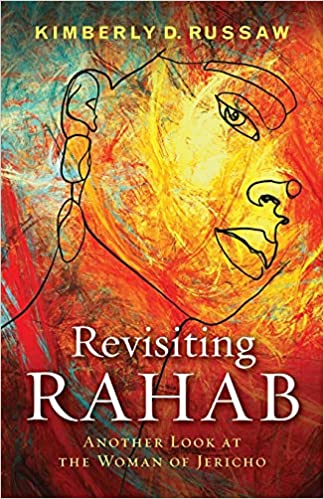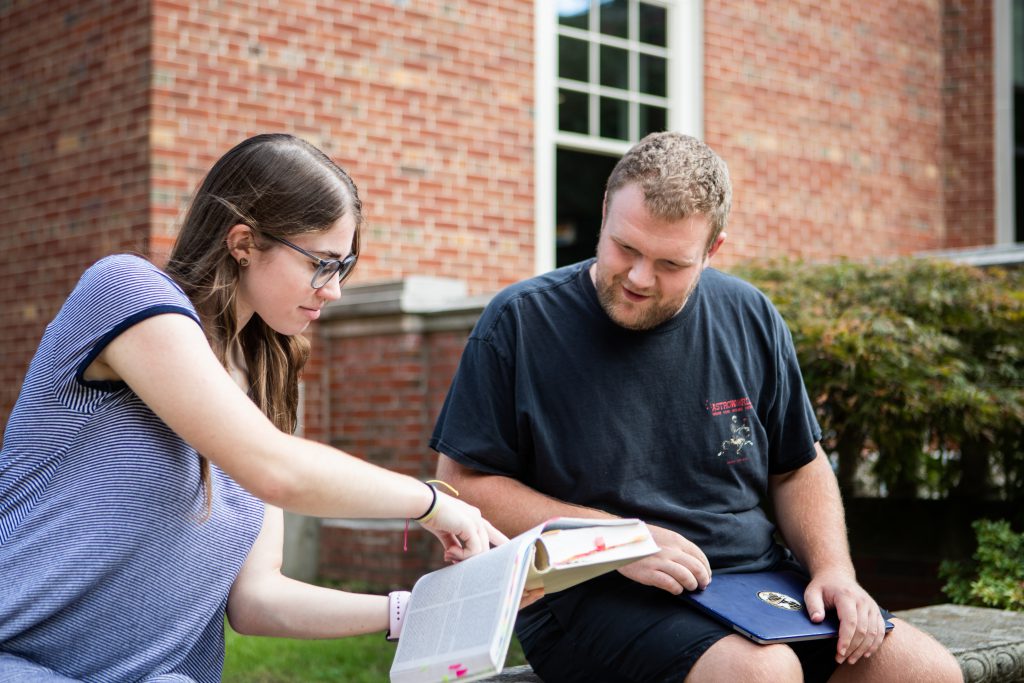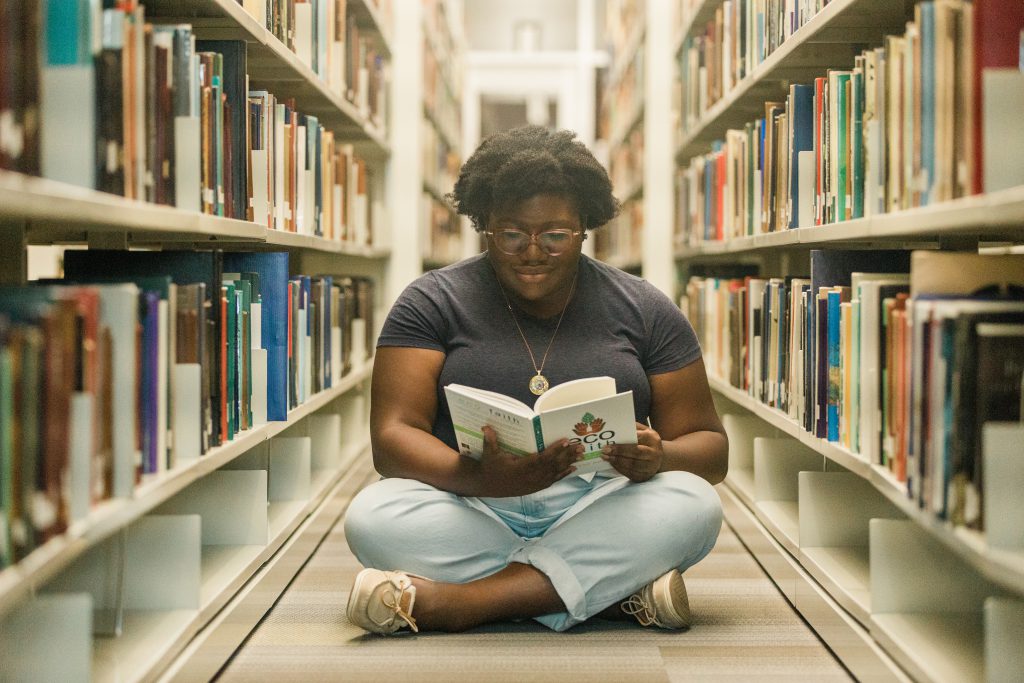In celebration of National Library Week, we highlight the dedicated work of our staff at the Clifford E. Barbour Library on the PTS campus. With almost 300,000 volumes, 88,000 micro forms, more than 800 periodical subscriptions, and a growing collection of electronic resources, the Barbour Library is one of the largest stand-alone seminary libraries in the country. The Library also houses archives and a variety of special collection materials, the Fred Rogers Family Room for children to use, and a chair and desk that once belonged to theologian Karl Barth.
Have you ever wondered how a book becomes part of a library collection? Journey with us as we explore the life cycle of a book, using Revisiting Rahab: Another Look at the Woman of Jericho by the Rev. Dr. Kimberly Russaw, associate professor of Old Testament.
Birth
Just like that Schoolhouse Rock bill sitting on Capitol Hill, books begin as an idea. In 2017, Dr. Russaw teaches a course at Candler School of Theology titled “Connecting the Canons: Sacred and Secular.” Dr. Russaw’s students inspire her to write an article for Horizons in Biblical Theology. The article, “Reading Rahab with Larsen: Towards a New Direction in African American Biblical Hermeneutics,” is published in 2020.
Meanwhile, Dr. Russaw turns her attention to writing a collection of essays about Rahab. Within a year, she completes the manuscript for Revisiting Rahab: Another Look at the Woman of Jericho. After six months of editing and rewriting, Wesley’s Foundry Books publishes Revisiting Rahab in 2021.
Acquisition
Barbour Library Director Michelle Spomer hears about Dr. Russaw’s new book during a faculty meeting. Part of her job as director is to do collection development. She places an order for copies of Revisiting Rahab using Gobi, which is like an Amazon for libraries.
Soon, the copies of Revisiting Rahab (available only in paperback) arrive in the Seminary mailroom and are retrieved and opened by Julien Donahoe, the acquisitions and serials librarian. Julien adds budget line information to the invoice and sends it to the business office for payment processing.
Darlene Veghts, the head of technical services, sends the Revisiting Rahab copies to Wert Bookbinding, where they will be bound with a hard cover to extend the shelf life.
Cataloging
Revisiting Rahab is sent back to the library. Julien attaches a barcode sticker and stamps the book with the library’s name and address. Julien downloads a temporary digital record for the book from an international library database and adds it to Barbour Library’s online catalog. If no record is available from the database, Darlene—who is an expert cataloger—will create an original record.
Darlene or Carrie Nelson, the electronic resources librarian, reviews the temporary catalog record for accuracy. Then they update the catalog record to include information pertinent to PTS patrons, such as additional notes or subject headings, to make the book easier to find when patrons search the online catalog.
Darlene assigns a call number to Revisiting Rahab according to the rules of Library of Congress classification. Bella, a front desk staff person, attaches a spine label. This makes it ready for circulation, and she puts it on the shelf.
If an ebook edition of Revisiting Rahab ever comes out and PTS purchases it, the order and catalog process is similar. Instead of a call number, ebook records are updated to include a link for access by PTS patrons, which Carrie tests.
Death
A book never really dies since it can be reprinted and/or revised, and since it sits on many bookshelves or is stored on a server as an ebook. But sometimes one particular copy begins showing wear and tear, and the library staff makes minor repairs over time.
Imagine that after one user checks out this aging copy of Revisiting Rahab, they bring it back to the library. But part of the cover and several pages ripped out after an unfortunate incident with the family dog. The library staff evaluates the damaged copy and determines it to be beyond repair. Darlene notifies Michelle, who orders a replacement copy through Gobi.
After a long, meaningful life, the damaged copy of Revisiting Rahab finds itself in the recycle bin and its life cycle is complete. At the same moment, a PTS student is reading in the stacks, and a new idea is planted in their mind. Eventually, that idea ends up as another book on the shelves of the Barbour Library!
The recently renovated Clifford E. Barbour Library isn’t just for PTS students, staff, and faculty! Library access is available for alumnae/i, clergy, and the general public. Learn more at www.pts.edu/barbour-library/Collection-Access.
Special thanks to the Clifford E. Barbour Library staff for their assistance in writing this post.




